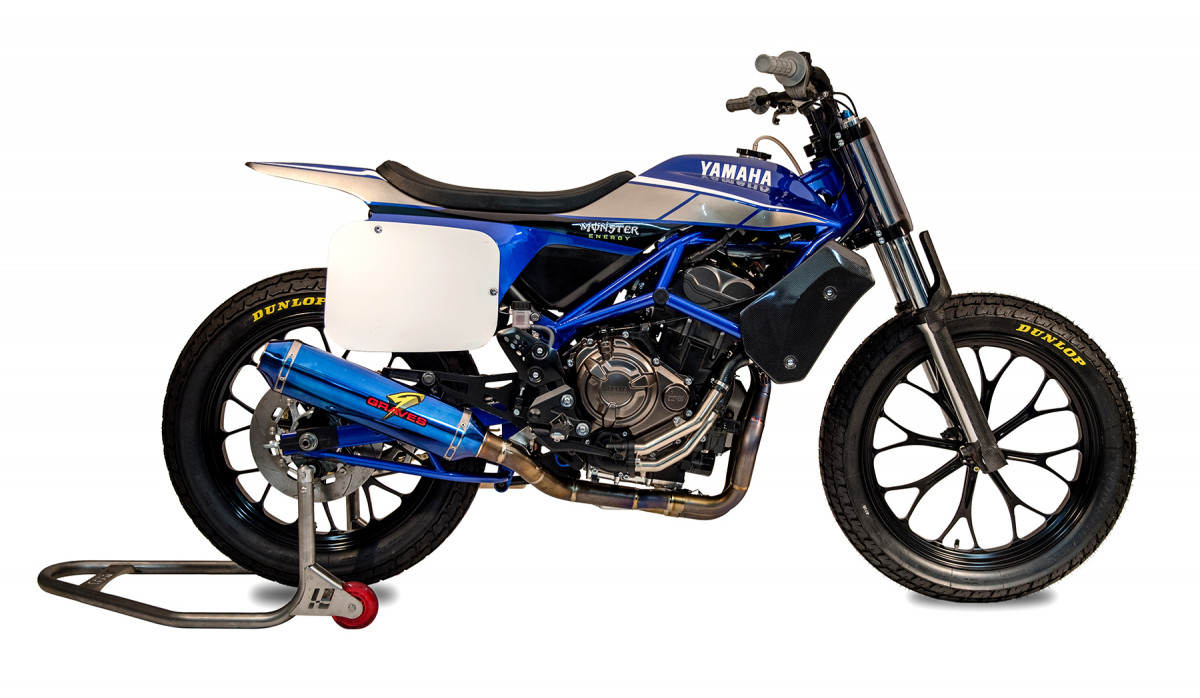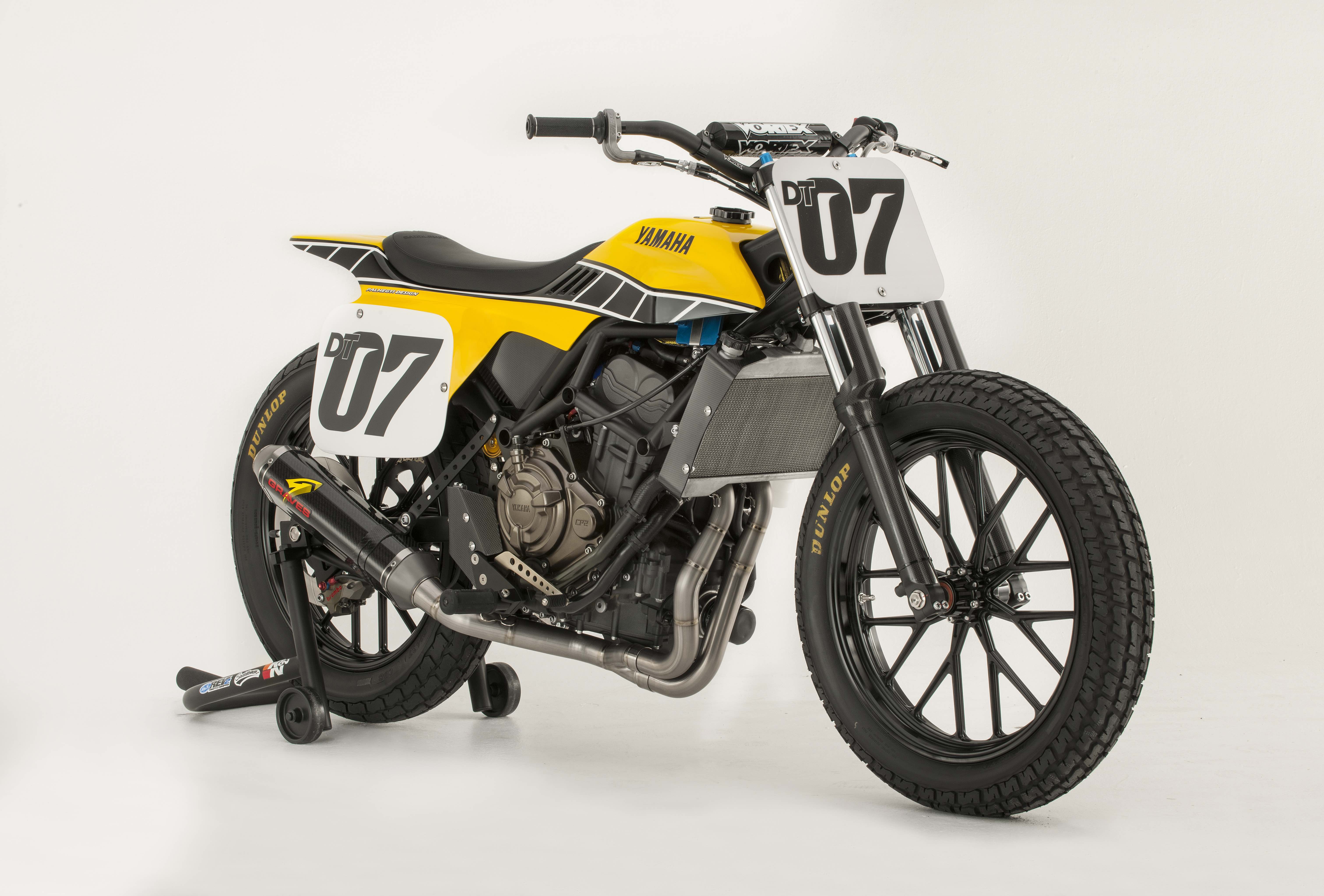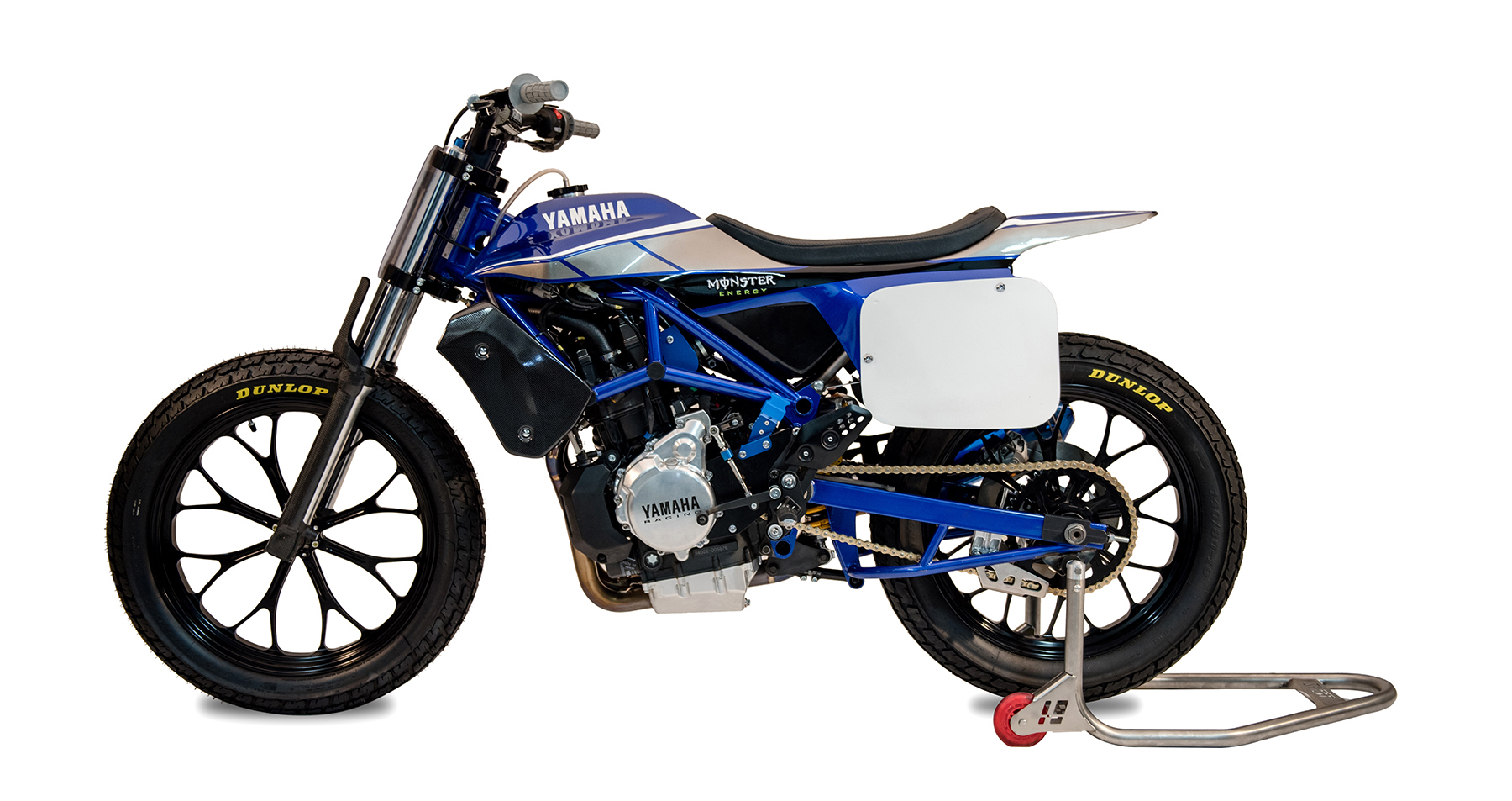
Exclusive! Yamaha MT-07 DT
In part I of a three-part series, Yamaha and AFT pull the wraps off Yamaha's new-generation dirt track racer, which will debut this Thursday under the Estenson Racing banner at the 2019 DAYTONA TT.
It’s rare when an Original Equipment Manufacturer builds a motorcycle or powerplant intended specifically for Grand National Championship flat track competition. In fact, it’s only happened a handful of times in the last half century.
Harley-Davidson did it in 1970 with the original XR750. Yamaha followed suit in the ’70s with its Roberts-era XS750 vertical twins and, later, its XV750 V-twin project. Honda built and raced the ultra-successful RS750 in the middle 1980s. Indian revolutionized the status quo in 2017 with its FTR750. And Milwaukee introduced its production-based XG750R as the ostensible replacement for the XR at about the same time.
History likes nothing better than to repeat itself, of course, and so it is this year with Yamaha’s new MT-07 DT factory flat track racer, which will hit the track in anger for the first time at the Daytona TT on March 14, 2019 under the Estenson Racing banner and carrying riders JD Beach, Jake Johnson and Kolby Carlile.
Like Yamaha’s previous factory-backed dirt track efforts, the successful one supporting Kenny Roberts on XS750s in the ’70s and the ill-fated venture featuring Mike Kidd and Jimmy Filice on XV750s in the early ’80s, the DT project is much more skunk works than corporate.
“Yamaha has a storied history in American dirt track racing,” says Yamaha Racing boss Keith McCarty, who began his career at Yamaha as a race mechanic 42 years ago, “and for many years the race team was quite successful. Until the FZ-07 [now called the MT-07] appeared we didn’t really have a production engine that could compete in the modern AFT Twins class. But with the FZ’s debut we suddenly did – and that got me thinking about a racing machine that was a bit different than what was being built and raced in the AFT national series.”
Coincidently, Yamaha motorcycle product line manager Derek Brooks, a former flat tracker himself, was thinking along similar lines. “When I saw the original FZ-07 production concept bike in Japan with its cross-plane parallel twin 690cc engine,” Brooks says, “my mind immediately went to building a flat tracker. While brainstorming ideas for building excitement around the Yamaha brand at that year’s AIMExpo, I figured this would be an ideal concept bike to showcase the brand as well as the relatively new FZ-07. We then went to work with noted designer, fabricator and stylist Jeff Palhegyi to build the bike.”
The DT concept blended new (FZ/MT-07) and more classic (early YZ motocrosser) shapes into a thoroughly sexy package and was an immediate hit in its Roberts-era yellow and black livery. This was especially so with the custom street-tracker crowd that’d been clamoring for decades for a production-based flat track motorcycle that could be bought at a dealership (which they saw in this prototype), but also from flat track fans wanting Yamaha to revisit its Roberts-era glory days.

While structurally and dimensionally different from the actual MT-07 DT race bike, the 2015-spec DT-07 concept machine absolutely nailed the new-generation Yamaha dirt-tracker idea McCarty and Company were after. Dirt track and street tracker fans alike drooled in anticipation when the concept appeared – race fans because they saw a potential Yamaha flat track resurrection (happening now), and streetbike fans because they figured Yamaha might actually build this for the street (fingers crossed).
“My big push to Palhegyi,” remembers Brooks, “was that I didn’t want it looking like a traditional flat tracker. The body and frame had to look like a race bike designed in 2015.”
As exciting and well-received as it was, the DT concept was still just the first step – and McCarty wanted to take it farther than just a concept bike. It looked right and generated the sort of emotional connection the project would need from Yamaha brass and the flat track community (if it were produced on a limited basis and sold to race teams, as McCarty envisioned), and from potential buyers (if Yamaha actually built a for-sale street-legal version). But its guts – the chassis especially – were far from proven.
To determine if the frame design, geometry, suspension setup and other forward-looking technical bits designed into the DT concept bike were as functional and advantageous on an actual dirt race track as McCarty and his blue-shirted engineers thought they might be, the next step was real testing – which meant the concept prototype would have to be morphed into a running and functioning test mule. Which it quickly was.
All along, McCarty’s idea was to go beyond the dirt track status quo by doing certain things differently, and by taking advantage of his vast experience managing Yamaha’s world-class factory roadracing and motocross efforts over the years.

Stylish and lithe but dense-packed and mechanically purposeful at the same time, Yamaha’s DT racer offers a host of technology not seen on traditional twin-cylinder dirt track racers, including a roadrace-style linkage-type rear suspension system. It’s a beautifully designed piece from every angle.
“This was always much more than a styling exercise,” McCarty says. “We’d used and developed some really smart and workable designs and technology through our racing programs, and I wanted to bring some of that to our flat track effort. Things like a linkage rear suspension, the adjustable swingarm pivot, the pivot/countershaft relationship, adjustable front-end geometry, variable-length intake runners, airbox design, electronic shifting, full data-acquisition capability, improved ergonomics, the use of certain production parts, a no-fuss battery system, etc.”
Stay tuned for Parts II and III of the DT-07 Development Series story tomorrow, Tuesday, March 12 and Wednesday, March 13.
Latest news

AMA Pro Racing Announces 2026 Progressive American Flat Track Schedule


























